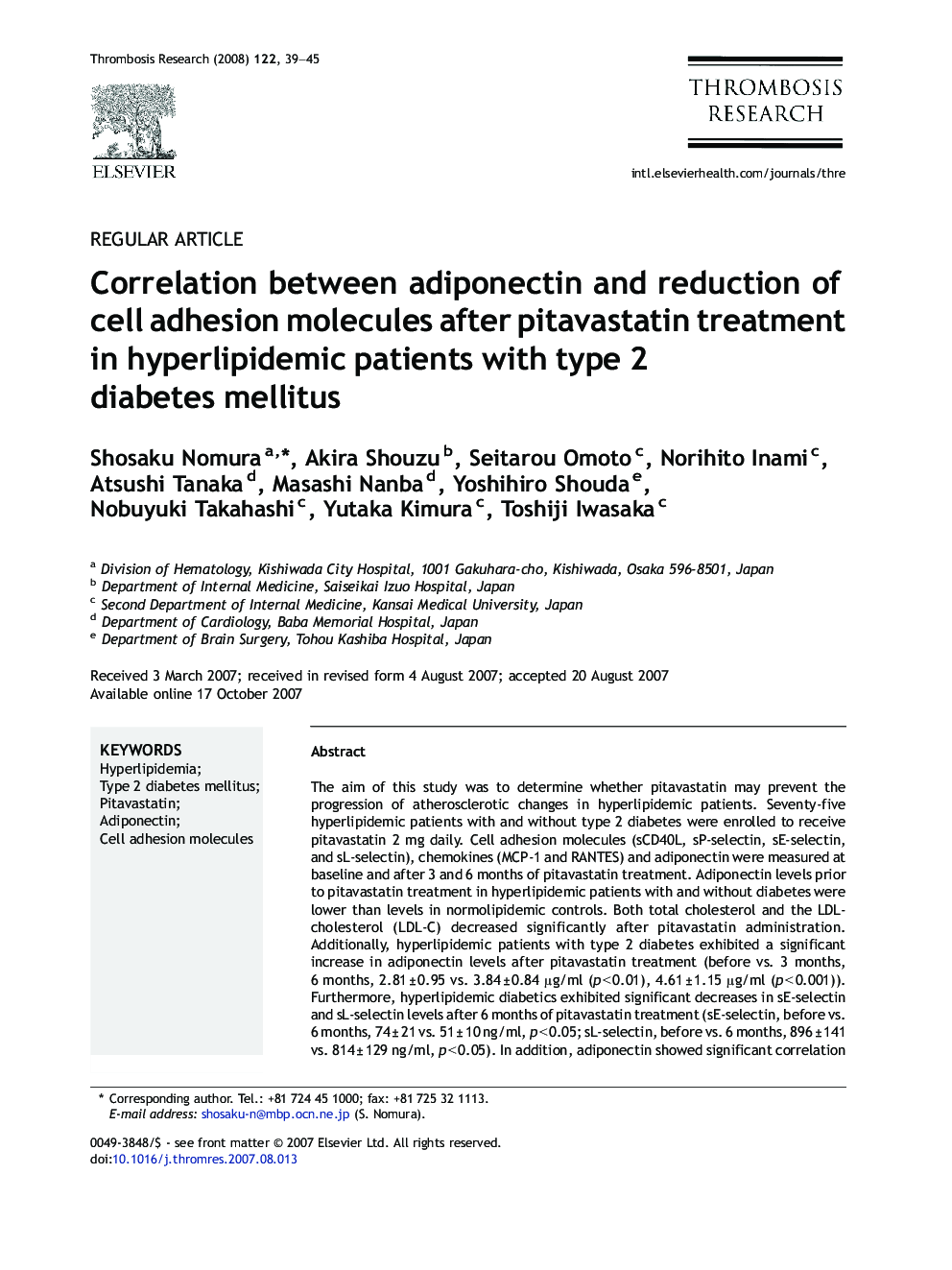| Article ID | Journal | Published Year | Pages | File Type |
|---|---|---|---|---|
| 3029541 | Thrombosis Research | 2008 | 7 Pages |
The aim of this study was to determine whether pitavastatin may prevent the progression of atherosclerotic changes in hyperlipidemic patients. Seventy-five hyperlipidemic patients with and without type 2 diabetes were enrolled to receive pitavastatin 2 mg daily. Cell adhesion molecules (sCD40L, sP-selectin, sE-selectin, and sL-selectin), chemokines (MCP-1 and RANTES) and adiponectin were measured at baseline and after 3 and 6 months of pitavastatin treatment. Adiponectin levels prior to pitavastatin treatment in hyperlipidemic patients with and without diabetes were lower than levels in normolipidemic controls. Both total cholesterol and the LDL-cholesterol (LDL-C) decreased significantly after pitavastatin administration. Additionally, hyperlipidemic patients with type 2 diabetes exhibited a significant increase in adiponectin levels after pitavastatin treatment (before vs. 3 months, 6 months, 2.81 ± 0.95 vs. 3.84 ± 0.84 μg/ml (p < 0.01), 4.61 ± 1.15 μg/ml (p < 0.001)). Furthermore, hyperlipidemic diabetics exhibited significant decreases in sE-selectin and sL-selectin levels after 6 months of pitavastatin treatment (sE-selectin, before vs. 6 months, 74 ± 21 vs. 51 ± 10 ng/ml, p < 0.05; sL-selectin, before vs. 6 months, 896 ± 141 vs. 814 ± 129 ng/ml, p < 0.05). In addition, adiponectin showed significant correlation with sE-selectin and sL-selectin in diabetic hyperlipidemia. However, MCP-1, RANTES and sCD40L did not exhibit any differences before or after pitavastatin administration. These results suggest that pitavastatin possesses an adiponectin-dependent anti-atherosclerotic effect in hyperlipidemic patients with type 2 diabetes in addition to its lowering effects on total cholesterol and LDL-C.
